#albert chmielowski
Explore tagged Tumblr posts
Text

Barn (circa 1882) by Adam Chmielowski, also known as St. Brother Albert (Polish, 1845-1916), National Museum in Warsaw
#adam chmielowski#painting#oil painting#polish art#poland#albert chmielowski#cloudy#cloudy day#moody nature#moody#19th century#19th century art#1880s#painters#polish painters#polish artist#artwork#art#european art#st. brother albert#*
54 notes
·
View notes
Text

Adam Chmielowski [Br. Albert], Ogród miłości (Garden of Love)
1876, oil on canvas
#poland#polish art#polish culture#polish paintings#polish painters#european art#polska#european fine art#19th century art#adam chmielowski#albert chmielowski#brat albert chmielowski#chmielowski
14 notes
·
View notes
Text

Death and Conflagration (after 1870, oil on canvas) | Albert Chmielowski
#art#fine art#painting#oil painting#19th century#death and conflagration#Albert chmielowski#aesthetic#dark#death
19 notes
·
View notes
Link
Albert Chmielowski - born Adam Hilary Bernard Chmielowski - was a Polish Franciscan tertiary, painter, and disabled veteran of the Uprising of 1863. He was foun...
Link: Albert Chmielowski
0 notes
Photo
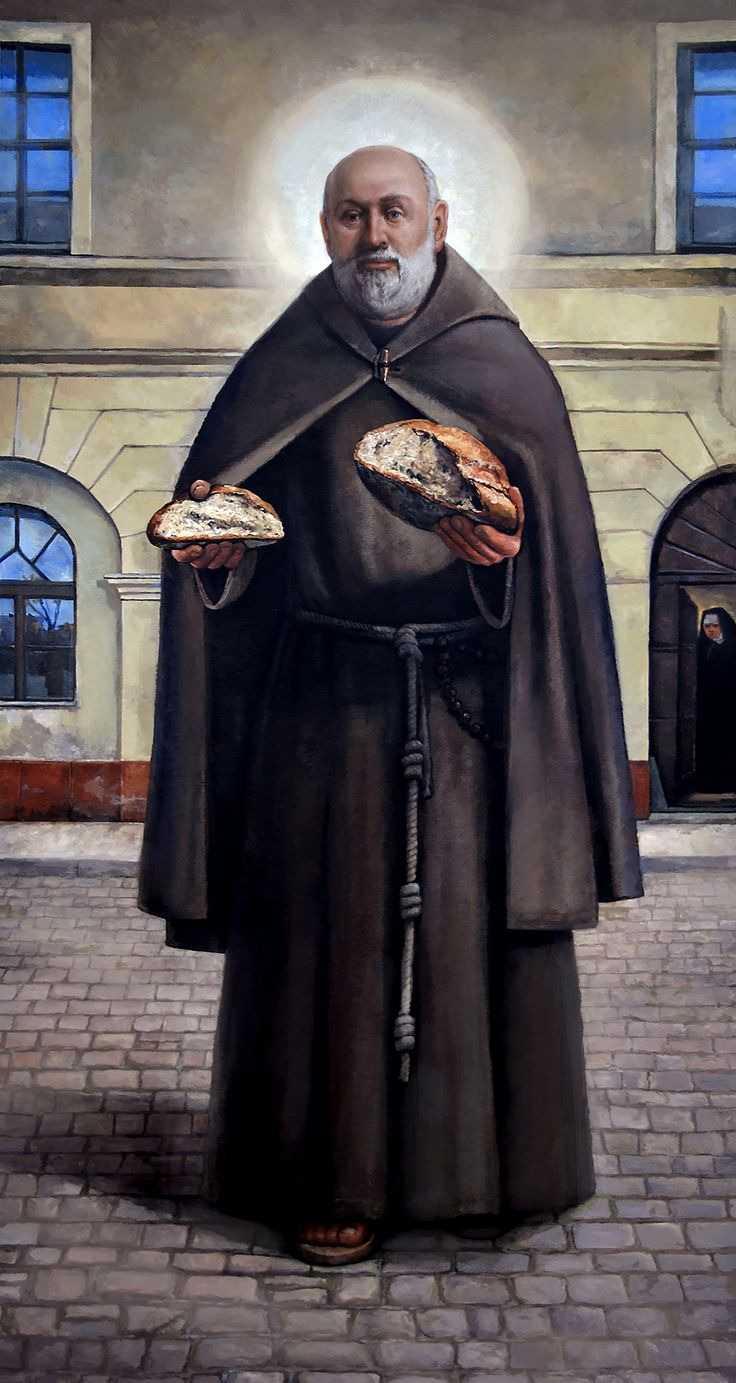
THE DESCRIPTION OF SAINT ALBERT CHMIELOWSKI The Patron of Soldiers, Volunteers, Travelers and the Diocese of Sosnowiec Feast Day: June 17 August 20, 1845 - December 25, 1916
"True cultural connection is the Holy Grail for brands if they want to create an enduring emotional relationship with people."
As a young revolutionary and artist in Poland, Adam Chmielowski was not a young man whom people thought would someday be a saint.
Albert (Christened Adam) was born in Krakow (Igołomia, Małopolskie, Congress Poland) in 1845, the eldest of four children in a wealthy aristocratic family. He and his siblings lost their parents while very young and were raised by a paternal aunt. Adam's initial education was in agriculture to prepare him for managing the family estate. They lived at a time when the country of Poland did not 'exist.' In the late 18th century, the once-mighty Polish nation was partitioned between Austria, Prussia (Germany) and Russia. The Polish people refused to accept this and were constantly rebelling against their oppressors. When Adam was 18, he took part in one of these uprisings. During a particularly brutal battle, a Russian grenade killed Adam's horse under him and severely damaged his leg. He was captured by soldiers allied with the Russians who took him to a woodman’s shed where his leg was amputated without anesthesia. He was then taken to a hospital for a medical assessment. While the soldiers debated on what to do with their injured prisoner, Polish allies aided Adam to escape from the hospital hidden in a coffin. The young Pole accepted his suffering stoically and learned to function with a wooden limb, offering all to God for the cause of Poland’s independence and rebirth.
Because of his actions against Russia, it became expedient for Adam to leave Poland. He initially immigrated to Belgium where he took up the study of engineering. During this period, it was discovered that he had artistic talent. He went on to France and then Germany, where he studied painting and proved his exceptional talent at the prestigious Academy of Fine Arts in Munich. When he was nearing 30, Adam returned to his homeland and became one of Poland’s most celebrated artists. His circle of friends included the best-known Polish artists, directors, actors, and writers of this time.
In spite of his growing success, Adam's life of celebrity left him feeling empty; at one point he was even hospitalized for depression. Throughout this period, Adam remained a devout Catholic and many of his works reflected this, including his masterpiece, the unfinished Ecce Homo, depicting the mocked Jesus. His need to be closer to God grew and sent him in search of God’s plan for him. He entered a Jesuit novitiate but realized quickly that God did not want him there. He became increasingly fascinated with the life and teachings of St. Francis of Assisi, and became a secular Franciscan, taking the name of Brother Albert. He even spent a brief period in a Carmelite monastery where he grew in spirituality but became reaffirmed that his place was as a Franciscan.
19th century Krakow's socioeconomic problems were many, in particular, social inequality. More than a fifth of the population was unemployed and homeless. Although many religious orders were hard at work trying to help the situation in their city, their efforts were insufficient for the ever-increasing numbers of poor. Concerned with the plight of the impoverished Poles, Adam began working in the city shelter and even opened his apartment to the homeless, eventually realizing that it was to this work that God was calling him.
In 1887 he began his 'religious life' as Brother Albert of the Third Order of St. Francis. Wearing a simple gray habit, he lived in the city homeless shelter with those he served. He soon realized that to bring the poor lasting change, the lice-infested Krakow shelter needed reform. He negotiated an agreement with the city of Krakow to become the institution's caretaker. To finance this reform, he auctioned off all his paintings. He began by banning alcohol in the shelter and requiring the residents to do work, teaching them practical skills and lecturing on the Gospels. Within a year, Brother Albert had founded his own branch of the Franciscans, the Servants of the Poor, who are sometimes called the Albertine Brothers. A few years later he founded the 'Albertine Sisters,' a women's congregation with the same intent of helping Poland's poor. They set up homes for the poor, sick, mentally ill and elderly in over 20 Polish cities. Today, the work St. Albert began continues. Sharing the life of the poor, he turned each filthy refuge into a warm shelter for Christ and encouraged the brothers and sisters of his Congregation to see Jesus in each human being.
Brother Albert worked and lived with the poor until his death in 1916 during World War I. At the time of that conflict his 'Albertines' were seen in the trenches aiding the sick and injured among the troops. St. Albert died on December 25, 1916, in a shelter he himself had opened in Krakow. His beloved Poland regained its independence and became a 'country' again shortly after his death, in 1918.
St. Albert was an inspiration to St. John Paul II. When Karol Wojtyła began his studies at Jagiellonian University, he was a young, promising actor, playwright, and poet. Like the young Adam Chmielowski, he found his calling to serve God and the Church was stronger than his love for the arts. John Paul II later said, that he found great spiritual support for his own vocation in the life of the Polish saint whom he saw as an example - leaving behind a world of the arts to make a radical choice for the priesthood.
In 1949, the young Father Karol Wojtyła repaid his spiritual debt by writing a play about St. Albert titled, 'Our God's Brother.' A Kracovian urban legend had it that Brother Albert met Lenin (who lived in Krakow after being expelled from Russia) and debated him on how to best alleviate poverty. The play features imagined dialogues between the saint and the communist revolutionary. (In 1997 the play was made into a film starring the late Scott Wilson.) As Cardinal Wojtyla, the future pope oversaw the apostolic process for Albert Chmielowski's cause for beatification. After his election to the papacy, John Paul II beatified St. Albert in 1983 and canonized him in 1989.
In today's self-centered age, when professional success is seen as the greatest good, St. Albert Chmielowski - who gave up the life of a celebrity painter to serve Christ by helping the poor - challenging us to ask if we focus too much on worldly goals and ignore life's true meaning.
Source: Guard of Honor of the Sacred Heart of Jesus
1 note
·
View note
Text


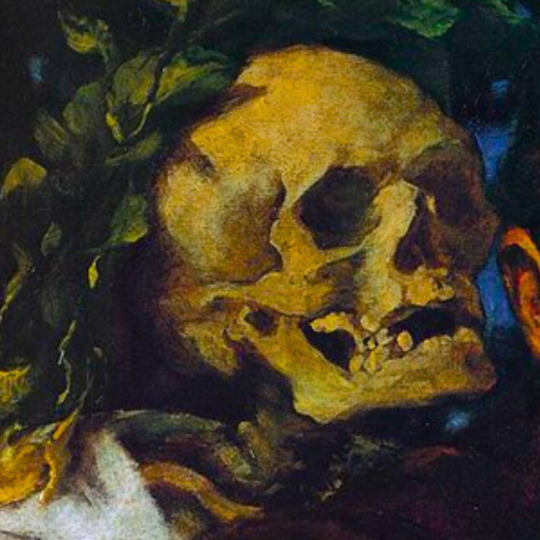
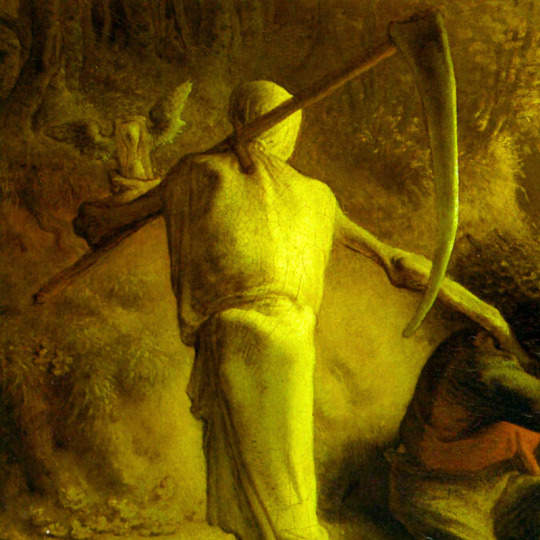


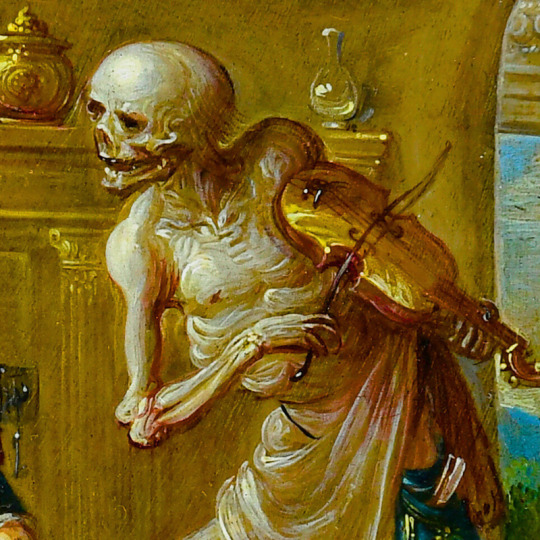
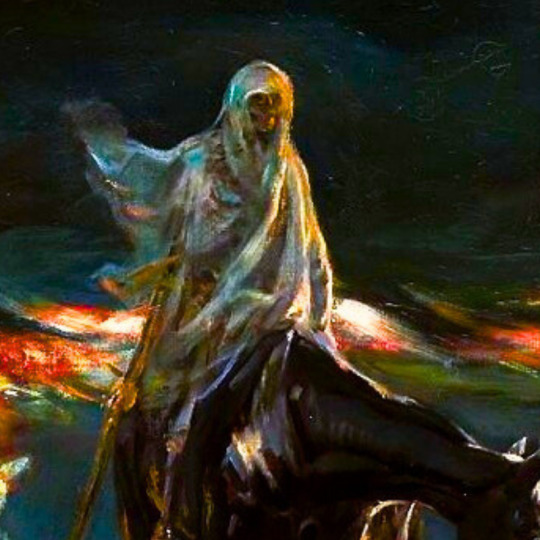

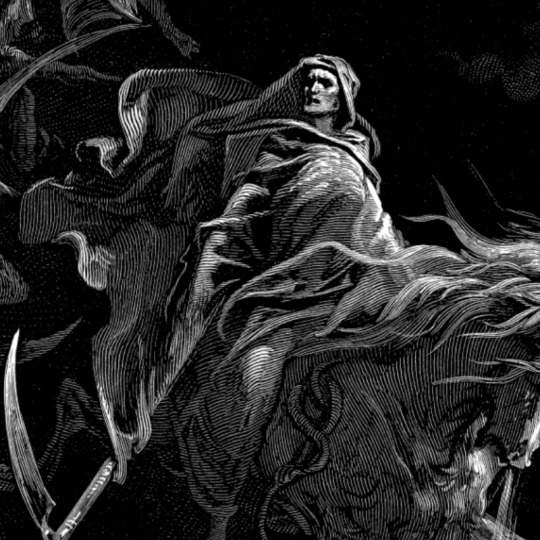
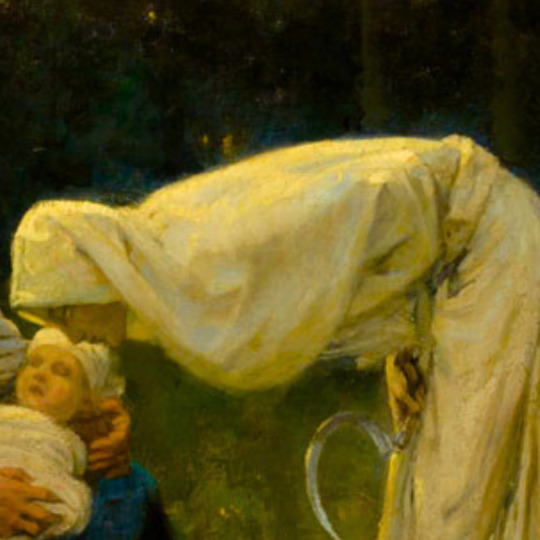
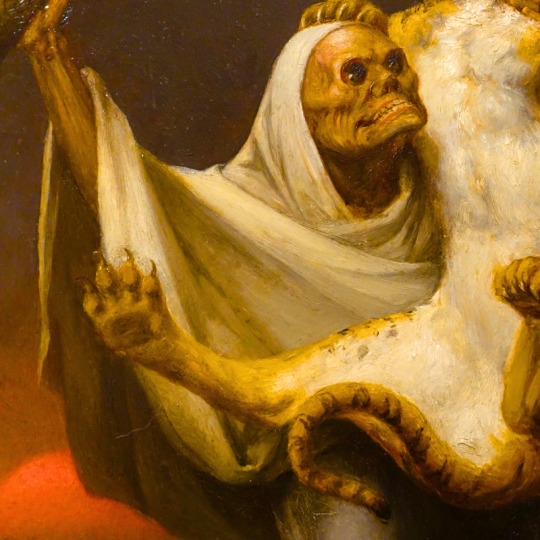
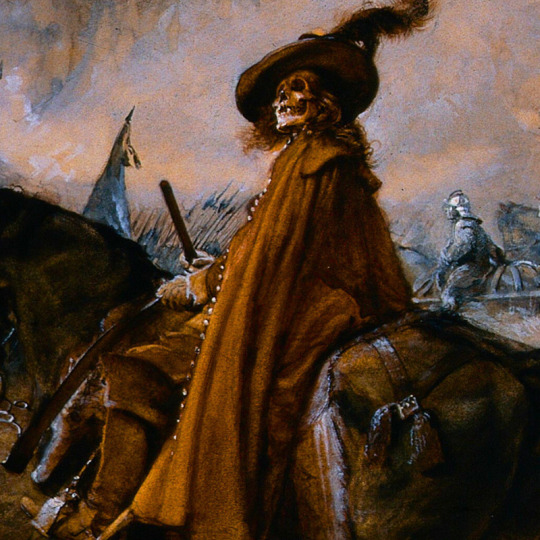

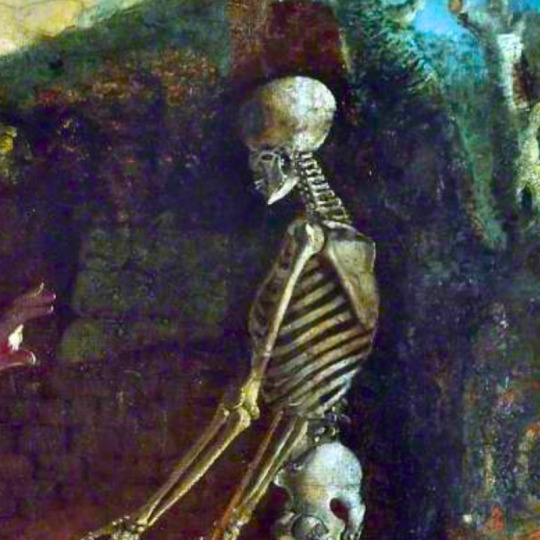
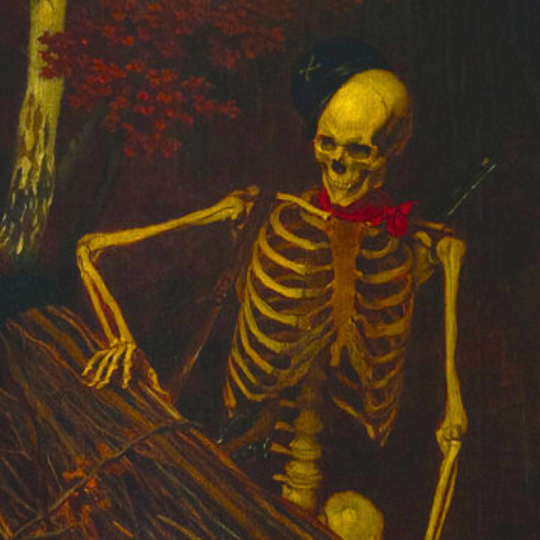
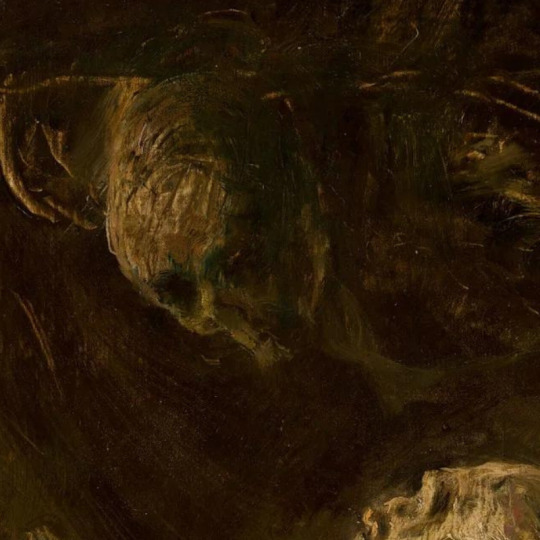
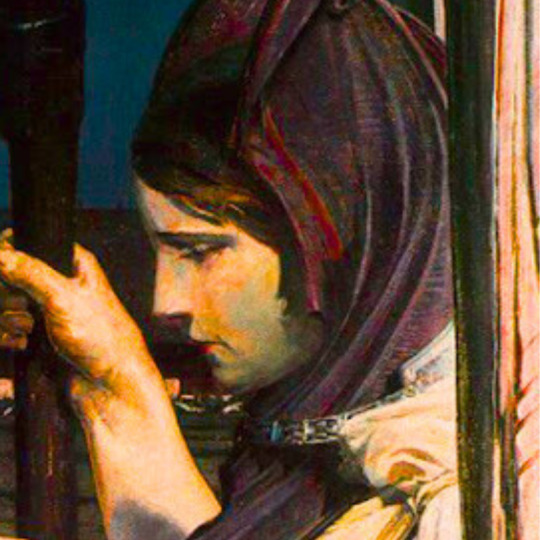

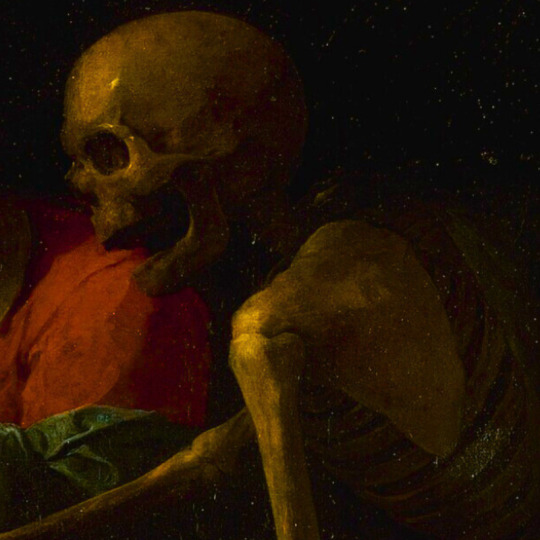

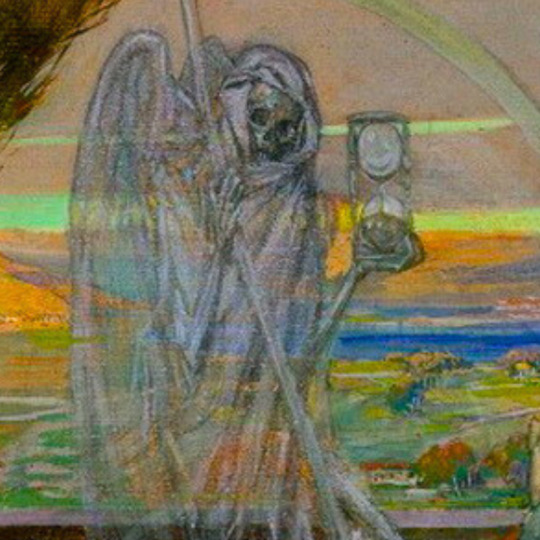

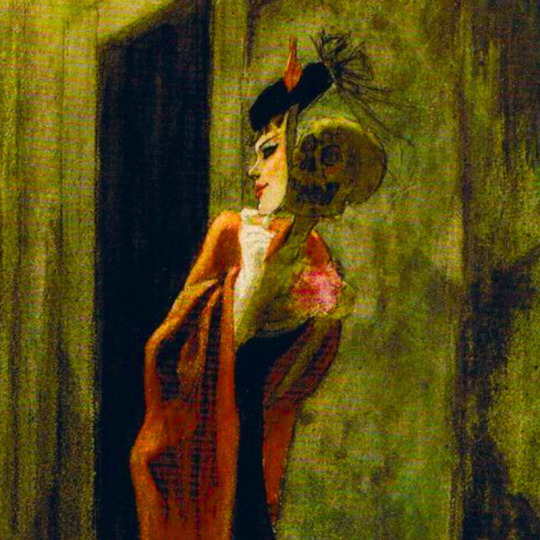
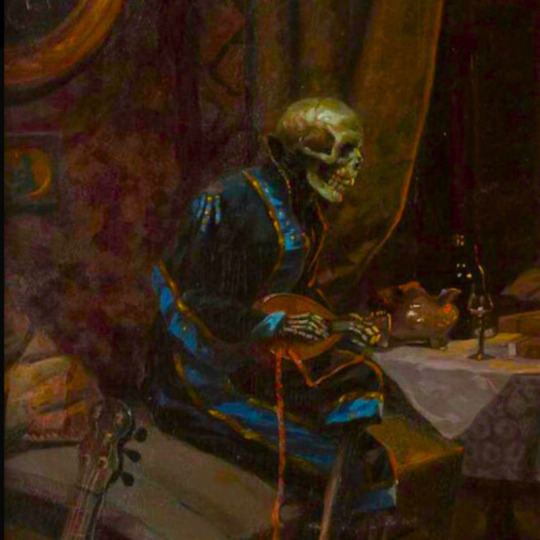




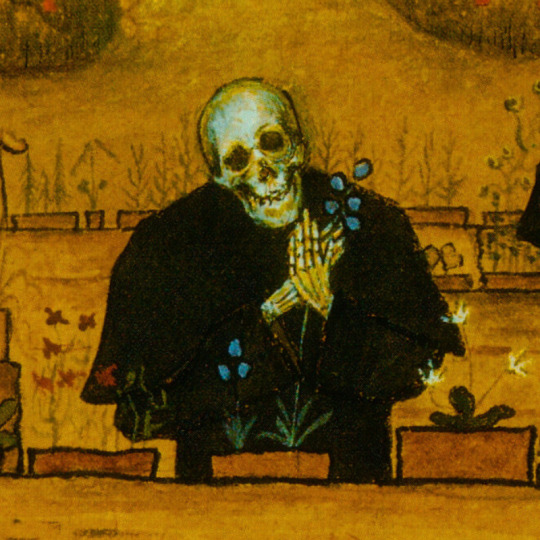
memento mori
#the ballad of lenora by horace vernet#the reaper by stevan aleksic#self portrait with love and death by hans thoma#death and the woodcutter by jean francois millet#self portrait in a tavern by steven aleksic#self-portrait with death playing the fiddle by arnold bocklin#death playing the violin by frans fracken#death and conflagration by albert chmielowski#death and life by gustav klimt#death on the pale horse by gustave dore#death by janis rozentals#power of death by william holbrook beard#death as a general rides a horse on a battlefield by edgar bundy#death vistor by adolph menzel#the old man and death by joseph wright derby#the old man and death by sobeslav pinkas#old man's death by laszlo mednyanszky#smierc by jacek malczewski#death and the miser by hieronymus bosch#death comes to the table of the miser by giovanni martinelli#konec vsech veci by maximilian pirner#a sickly female overlooking a beautiful view by richard tennant cooper#death and the masks by james ensor#the human paraody by felicien rops#the drinker by e plontke#death and the soldier by hans larwin#ahasuerus at the end of the world by adolf hiremy-hirschl#the last friend by zgymunt andrychiewicz smiierc#angel kills firstborn by ilya repin#garden of death by hugo simberg
924 notes
·
View notes
Text
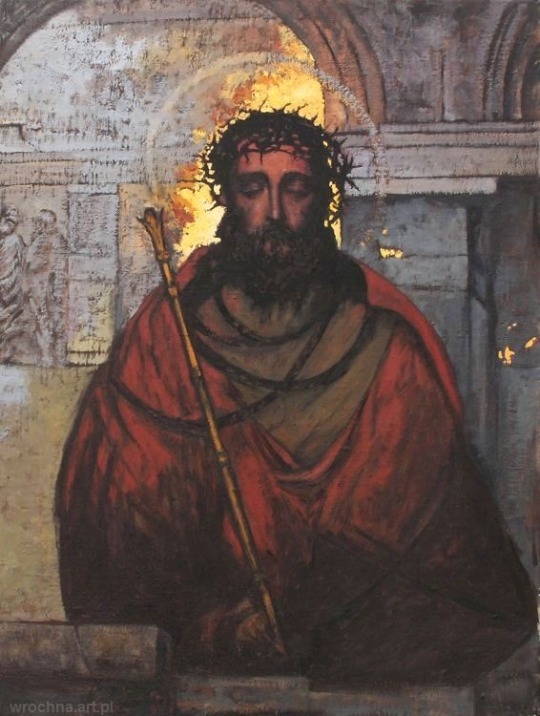
@maximofftwinsbitch
Ecce Homo
by Adam Chmielowski.
“A familiar subject undertaken by many artists, Ecce Homo by Polish artist Albert Chmielowski depicts the moment Christ was presented by Pontius Pilate to the crowd that had gathered to watch as Our Lord was scourged, crowned with thorns, and mocked by Roman soldiers.
St. Albert Chmielowski, canonized by Pope John Paul II in 1989 , was a well-known painter in his day before leaving the trade in order to more fully live out his calling to serve the poor as a professed Third Order Franciscan. He founded two religious orders, the Servants of the Poor and the Sisters Serving the Poor, commonly known as the Albertine Brothers and Albertine Sisters.
Pope John Paul II was greatly influenced and inspired by the example of St. Albert during his own formation as a young Polish priest. John Paul II even wrote a play about St. Albert's life entitled "Our God's Brother," which was later made into a feature length film in 1997.
In the image, a beaten Jesus Christ stands with a rod, crown of thorns, and a cloak while waiting for his death.”
#St Albert Chmielowski#Ecce Homo#Jesus#Jesus Christ#God#Passion#Holy Week#reference#Catholic#Catholicism
47 notes
·
View notes
Text
SAINT OF THE DAY (June 17)

Albert was born on 20 August 1845 in Igołomia, on the outskirts of Kraków Congress Poland, as Adam Hilary Bernard Chmielowski.
He was the founder of the Albertine Brothers and Sisters, and one of the saints who inspired the vocation of the young Karol Wojtyla, the future Pope John Paul II.
Born into a wealthy and aristocratic family, Adam was the oldest of four children.
Actively involved in politics from his youth, Adam lost a leg fighting in an insurrection against Czar Alexander III at age 18.
In Krakow, he became a popular artist and his talent in the subject led him to study in Munich and Paris.
A kind and compassionate person, Adam was always deeply aware of human suffering and felt called to help those in need.
Realizing that God was calling Him to a life of service, he returned to Krakow in 1874, determined to dedicate his talents to the glory of God.
Instead of continuing his work as an artist, he decided to care for the poor and became a Secular Franciscan, taking the name Albert.
In 1887, Albert founded the Brothers of the Third Order of Saint Francis, Servants of the Poor, known as the Albertines or the Gray Brothers.
Then, in 1891, he founded a community of Albertine sisters, known as the Gray Sisters.
The Albertines organized food and shelter for the poor and homeless of any age or religion.
Albert preached on the great crisis that results from a refusal to see and aid the suffering individuals in society.
In 1949, Pope John Paul II, who was at the time Father Karol Wojtyla, wrote a well-received play about Albert called Our God’s Brother.
The Pope later said that he found great spiritual support for his own vocation in the life of St. Albert, whom he saw as an example of leaving behind a world of art, literature, and theater to make a radical choice for the priesthood.
Brother Albert died on Christmas Day, 1916.
Pope John Paul II beatified Albert on 22 June 1983 and canonized on 12 November 1989.
The Church celebrates St. Albert’s feast day on June 17.
#Saint of the Day#Saint Albert Chmielowski#Brothers of the Third Order of Saint Francis#Albertines#Gray Brothers#Gray Sisters#Pope John Paul II
2 notes
·
View notes
Text
paintings round 2 poll 55
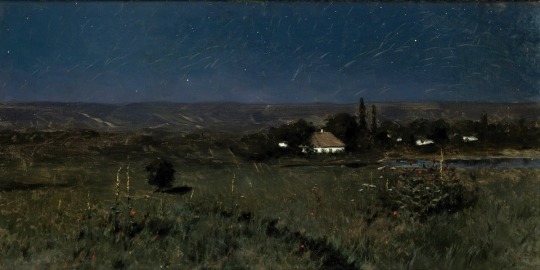
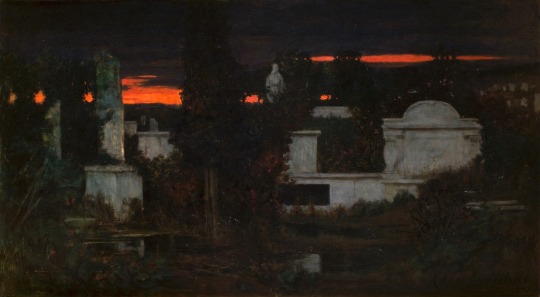
Night in Ukraine by Stanisław Witkiewicz, 1895:
propaganda: dynamic and peaceful at the same time, you can really get lost in it
about the artist: He was kind of a snack, google him. Also, he was an architect and created the characteristic Zakopane art style by combining the traditional architecture of the region with art nouveau style.
submitted by @slaviclore :)
Italian cemetery at dusk by Adam Chmielowski, 1880:
propaganda: You need to see it live to really grasp the vibrancy of the colors and the deep, deep contrast. The clean line. And that luscious orange in GRAVEYARD LANDSCAPE. Like, if the dude haven't decided to drop out of Art University to become a saint his painting career future was BRIGHT.
about the artist: Adam Chmielewski (also known as Saint Brother Albert) - a guy who went to Art University, but after loosing leg in January Uprising and painting Jesus dedicated his life to charity, and was later announced saint.
submitted by @deesbullshitbonanza
83 notes
·
View notes
Text

Let us be as good as bread, and let us share this bread with another man.
Let the intercession of St. Brother Albert Chmielowski asks us all graces and great love towards our neighbor.
St. Brother Albert, pray for us.
#god#follow me#jesuschrist#i need followers#faith#roman catholic#catholicism#amen#god loves you#faithful#saint of the day#god is love#polishblogger#catholic church#iglesia católica#mary mother of jesus
12 notes
·
View notes
Text

Portrait of Antoni Sygietyński (circa 1875) by Adam Chmielowski, also known as St. Brother Albert (Polish, 1845-1916), National Museum in Warsaw
Sygietyński was a Polish literary, music and theater critic, naturalistic novelist, pianist and teacher.
#adam chmielowski#saint brother albert#antoni sygietyński#polish art#antoni sygietynski#artist#art#polish painters#painters#portrait of a man#painting#oil painting#artwork#1870s#19th century#19th century art#european culture#european art#franciscan#dark academia
16 notes
·
View notes
Text

Adam Chmielowski [Br. Albert],
Śmierć i pożoga, środkowa część tryptyku "Klęska"
Death and Conflagration, Middle part of the triptych "Calamity"
after 1870, oil on canvas
#poland#polish art#polish culture#polish paintings#polish painters#polska#european art#european fine art#19th century art#adam chmielowski#albert chmielowski#brat albert#chmielowski
8 notes
·
View notes
Text

Italian Cemetery at Dusk | Albert Chmielowski
6 notes
·
View notes
Text

Italian Cemetery at Dusk, 1880, oil on canvas. 79 x 143 cm, Adam Chmielowski (Saint Albert Chmielowski) (1845-1916) National Museum, Kraków.
0 notes
Photo

[June 17 - Saturday of the Tenth in Ordinary Time St. Albert Chmielowski, religious Memorial of the Immaculate Heart of Mary]
"My imagination connected with the echoing world. My joyful heart said to me, 'I want to play music'. It started to flow as I sing. So that you can smile when you receive this voice, I wish to deliver my note to you." -excerpt from 'Echoes My Note'
Listen to the classic violin suites, gallop the horses and play with Alto, as we are giving a big honor to the former violinist of Altessimo that is Rei Kagura! Hope you're having a good day and spend your special day with everyone, including Alto and Kei!
2 notes
·
View notes
